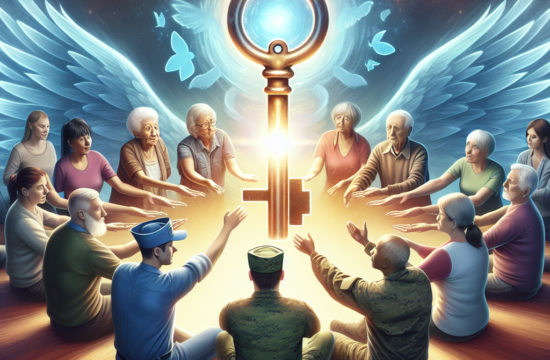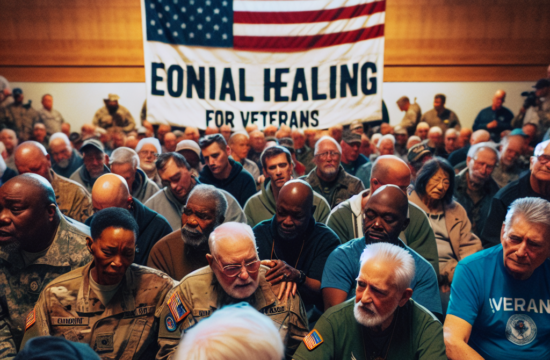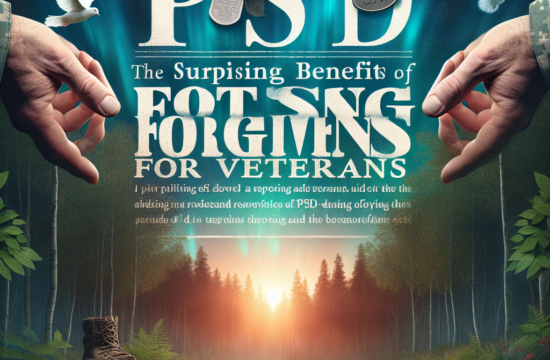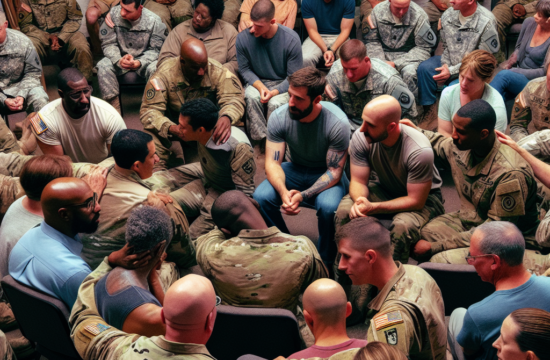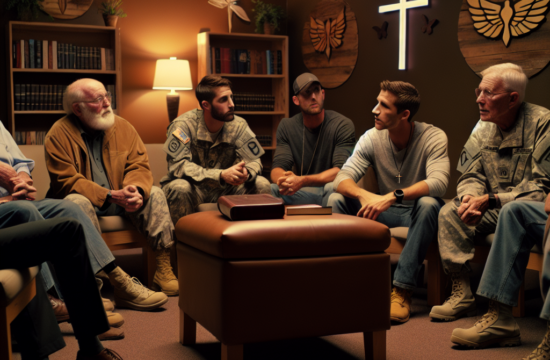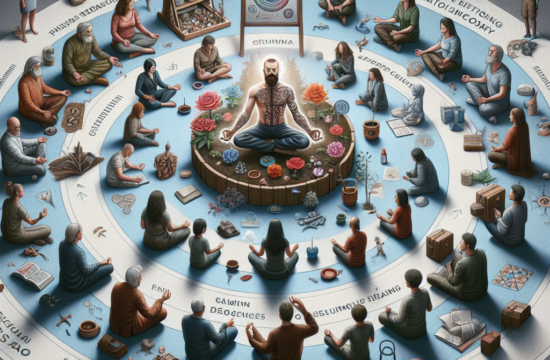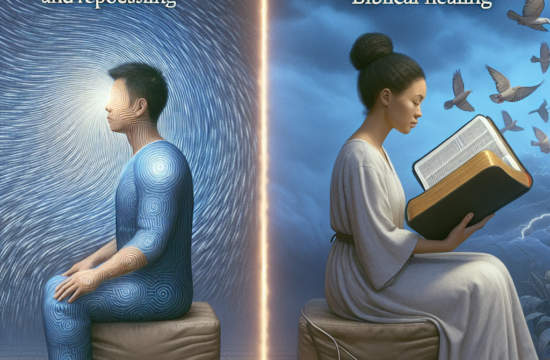==> Thank you for reading this post! Click Here If you are looking for support and Victory over PTSD.
Understanding Trauma
What is Trauma?
When I first started learning about trauma, I was taken aback by how common it is. Trauma isn’t just something that happens in extreme situations; it can come from any distressing experience. This could be anything from losing a loved one to emotional neglect in childhood. Understanding what trauma is and how it affects us is the first step in the healing journey.
Trauma affects both our mental and physical health. It can lead to anxiety, depression, and even chronic health problems if not addressed. I learned that trauma isn’t a ‘one size fits all’ deal; different people react in different ways, and that’s perfectly okay.
By grasping the fundamentals of trauma, I found myself feeling less alone. It’s a shared human experience, and acknowledging this can be the starting point for healing. You’re not broken; you’re simply processing what life has thrown at you.
The Science Behind Trauma
I’ve spent quite a bit of time diving into the science of trauma, and let me tell you, it’s fascinating! Our brains are wired to remember traumatic events, thanks to the amygdala, that small almond-shaped cluster in the brain responsible for our fight or flight responses.
When I learned that our bodies often hold onto trauma, it clicked for me. The sensations, the anxiety, they’re not just random; they are legitimate responses to real experiences. Understanding the biology behind trauma helped me reframe my own struggles.
Furthermore, recognizing how trauma impacts the nervous system can really illuminate why certain situations trigger intense feelings. It’s like, wow—no wonder that memory sparks a reaction in me. This knowledge gave me power over my experiences.
Identifying Your Trauma
One thing I found crucial in my own healing was identifying my specific traumas. This step can feel daunting but trust me, having clarity brings a sense of freedom. It meant sitting down with my own thoughts and reflecting on my past experiences honestly.
Writing things down became therapeutic for me. It didn’t just allow me to pinpoint events; it also helped in processing my emotions connected to those events. Seriously, pen and paper can work wonders!
Realizing what I was carrying from my past lightened my load immensely. It freed me to explore ways to heal instead of being trapped in blind reactivity. It’s a journey, but one step at a time works.
Finding Support
Reaching Out to Trusted Individuals
One of the best things I did on this journey was find my tribe. Surrounding myself with supportive friends and family made a world of difference. I used to think I could handle everything on my own, but boy, was I wrong!
Talking openly with trusted individuals allowed me to express my feelings and fears without judgment. Sometimes it’s just about having someone listen, you know? Those moments of vulnerability often turned into powerful bonding experiences.
Don’t be afraid to lean on your support system; they want to help you heal. Each conversation I had made the weight of my trauma a bit lighter. Connection is truly one of the greatest healers.
Professional Help
Let’s be real, seeking professional help can be intimidating. I hesitated for a long time before I finally called that therapist. But therapy offered a safe space to explore my life’s challenges without the pressure of judgment.
In therapy, I found tools and coping mechanisms that helped manage my trauma’s impact. Each session was a mini therapy session for my skull, and over time, I began to see a massive shift in my perspective.
If you’re in doubt, I can’t recommend therapy enough. Finding someone trained to guide you through the maze of your experiences can be a game changer. Don’t be ashamed; it’s a brave step forward!
Support Groups
Support groups might not be for everyone, but I found them incredibly helpful. Sharing my experiences with others who were on similar journeys created an unspoken bond. There’s healing magic in shared stories!
In these groups, I got to hear different perspectives on healing, and it was eye-opening. People shared coping strategies I had never thought of before. Plus, realizing you’re not alone is a comforting feeling.
Being part of a community can provide you with both inspiration and strength. You can laugh, cry, and sometimes just sit silently together. This shared experience can solidify your healing journey like nothing else.
Practicing Self-Care
Discovering What Works for You
Self-care became my therapeutic anchor. I used to think it was all about bubble baths and spa days, but it’s so much deeper. For me, self-care means engaging in activities that nourish my soul and spirit—things that vibe with who I am.
Whether it’s reading a good book, going for a hike, or simply cooking a nice meal, I’ve learned to listen to my body and mind about what they need. It’s absolutely okay to prioritize yourself—self-care isn’t selfish!
Finding what resonates with me helped establish a physical and emotional safety net. Taking time for myself never feels like a waste; it’s an investment in my healing.
Get Support and Help with Recovery! Visit us for more Information and Support
Building Healthy Routines
I can’t stress enough how foundational routines are. They provide stability in the middle of emotional chaos. I started simple, waking up around the same time each day and incorporating small rituals that brought me joy. They served as my anchors.
Cultivating good habits like exercise, healthy eating, and mindfulness has been transformative for me. These healthy routines have helped subdue anxiety and serve as a reminder of what I’m capable of—progress!
As I built consistency in my daily routine, I found my resilience grew stronger. I felt more in control, which is a big deal when healing from trauma. To wake up and know what your day holds can be quiet reassuring. You got this!
Mindfulness and Meditation
Meditation was a game changer for my mental and emotional landscape. At first, I was skeptical; I thought, “Can I really sit still with my thoughts?” But giving it a try opened up a whole new world for me.
Practicing mindfulness allowed me to observe my thoughts without judgment. Instead of getting swept away in emotional waves, I learned to ride them out. It was as if I was finally able to breathe amidst the chaos!
Integrating mindfulness into my daily routine reduced my overall stress levels. Taking just ten minutes to breathe and focus helped ground me. Its simplicity is what makes it so powerful—give it a shot, you might surprise yourself!
Embracing Healing
Accepting Your Journey
Embracing healing is a process, not a destination. And trust me, I had to learn that the hard way. There were days I felt like I was taking two steps back, but slowly, I learned to accept my journey, flaws and all. It’s messy, but that’s part of it!
The acceptance aspect is key! I had to accept that healing may not always look like a neat path. Sometimes it’s a winding road full of unexpected bumps and turns. But that doesn’t mean I’m off-track; it just means I’m human.
Every hiccup along the way is a lesson, and that’s worth holding onto. Healing is personal, and however it unfolds for you is valid.
Looking Ahead
Can I tell you? Looking ahead is simultaneously thrilling and terrifying. I had so many hopes and dreams on my healing journey, and it was scary to think about what they’d look like after trauma. But with each small victory, my vision became clearer.
Thinking about the future now excites me! I’ve learned to focus on what I can control while letting go of the past. Trusting that I have the skills to navigate life moving forward has been liberating.
Embracing hope becomes a powerful toolkit. Focusing on what brings me joy reminds me of the resilience and strength we all have within. The future is unwritten; let’s create something beautiful!
Creating a New Narrative
When I began rewriting the narrative of my past, it felt empowering. I started viewing my trauma not as a definition but as a chapter in the book of my life. That chapter is part of me, but it doesn’t define who I am.
I realized that every healing step allowed me to craft my next chapters with hope and purpose. Narrating my story became an act of reclaiming my voice—and it worked wonders for my self-esteem!
We all have the power to reshape the way we talk about our experiences. Your story matters, and changing how you frame it can lead to transformative healing. Own your story; it’s yours, and it’s beautiful!
FAQs
1. What is trauma, and how can it affect me?
Trauma is a response to a distressing event, and it can affect both mental and physical health. It’s essential to recognize that everyone processes trauma differently, and understanding its impact can aid in the healing process.
2. How can I tell if I need professional help?
If you’re finding it hard to cope with daily life or experiencing prolonged feelings of sadness, anxiety, or irritability, it could be beneficial to seek professional help. A therapist can provide guidance tailored to your needs.
3. What self-care practices should I consider?
Self-care starts with identifying activities that bring you joy and relaxation. This can include mindfulness, physical activity, healthy eating, or simple hobbies that help you unwind. It’s all about listening to your body and mind!
4. Are support groups helpful for trauma healing?
Many people find support groups incredibly helpful! Sharing stories with others can create a sense of community and understanding, reinforcing that you aren’t alone on this journey.
5. How can I start my healing journey?
Starting your healing journey can be as simple as reflecting on your experiences, finding support, engaging in self-care, and being open to professional help. Remember, it’s okay to take small steps—healing takes time!






